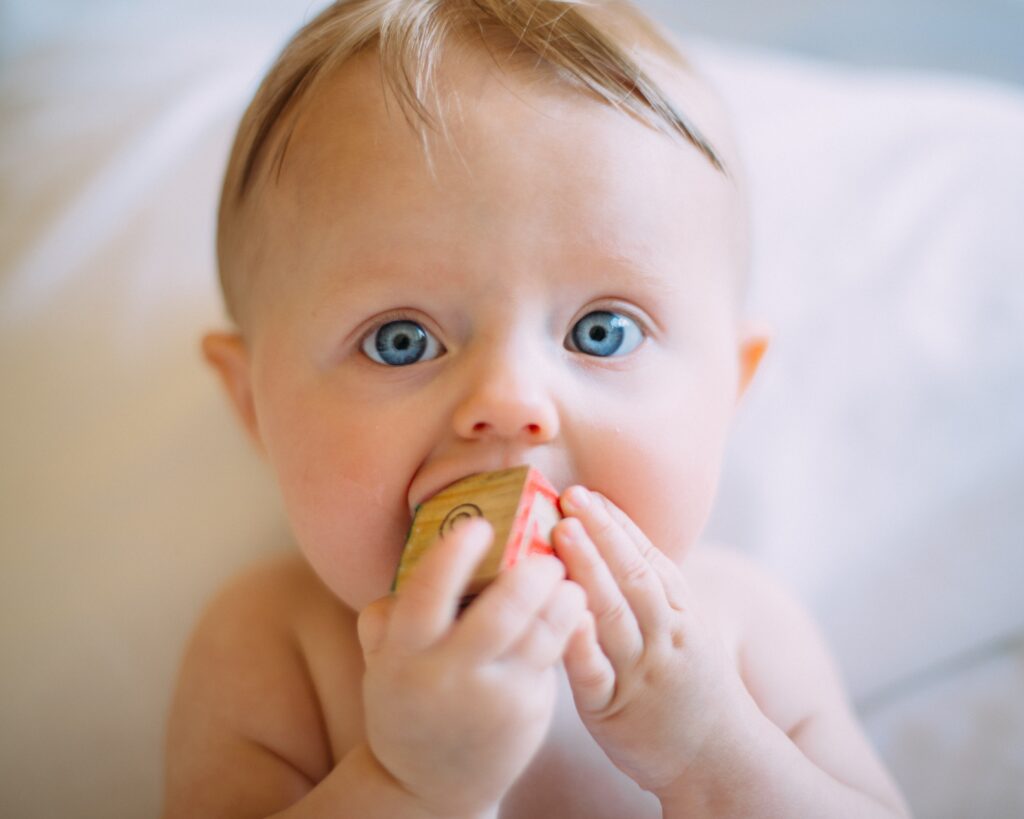Teething jewelry, such as amber necklaces and colorful silicone beads, is becoming increasingly popular among parents and caregivers as a way to soothe teething infants and toddlers.
While these products are marketed as being safe and useful for easing teething discomfort, it’s important to be aware of the potential hidden risks that may lurk beneath the surface. In this blog post, we’ll explore its potential dangers and provide practical tips on how to select, use, and maintain them to ensure your little one’s safety.

What is Teething Jewelry?
Teething jewelry is specifically designed for babies and toddlers to wear while they are teething. This includes items such as amber necklaces, baltic amber bracelets, and silicone beads. Many of these are marketed as being safe and effective at helping to ease teething pain. They are often marketed as a natural remedy, containing a variety of minerals and essential oils.
Teething Jewelry is increasing in popularity
The popularity of these products has been on the rise over the past few years, with many parents turning to these products to soothe their child’s teething pain. However, despite the claims made by manufacturers, some hidden risks come with using these products.

The hidden risks involved in Teething Jewelry
It is important to be aware of the potential risks before using them for your child. Let’s explore some of these risks in more detail:
Choking hazard
One of the biggest risks associated with teething jewelry is the choking hazard they pose. It is often made up of small beads, strings, and other items that babies can easily put in their mouths. As the baby chews on the jewelry, these pieces can become loose and be swallowed. This can lead to serious health problems, such as choking or even strangulation.
Strangulation risk
In addition to choking, it also carries the risk of strangulation. Babies can easily get tangled in the jewelry, leading to serious health risks.
Toxic materials
Many of these products are made with materials that contain toxins, such as lead or BPA. These materials can be absorbed by the skin and can cause serious health problems.
Infection risk
Teething jewelry can also carry the risk of infection. Since the jewelry is constantly in contact with the baby’s mouth and skin, it can easily become a breeding ground for bacteria, leading to infection.
Safety tips for Teething Jewelry
It is important to take the necessary steps to ensure the safety of your child when using teething jewelry. Here are some tips for doing so.

Choose FDA-approved jewelry
Make sure to only purchase jewelry that is approved by the Food and Drug Administration (FDA). This will help ensure that the materials used are safe and free from toxins.
Choose a breakaway clasp
When choosing teething jewelry, look for a breakaway clasp. This will help prevent the jewelry from becoming tangled and causing strangulation.
Proper supervision
Be sure to always supervise your child when they are wearing teething jewelry. This will help ensure that they are not putting the pieces in their mouths or otherwise playing with them in a dangerous way.
Avoid long pieces of teething jewelry
Try to avoid purchasing long pieces such as necklaces. These can be easily caught on furniture and other objects, leading to strangulation.
Alternatives to Teething Jewelry
If you’re looking for an alternative to teething jewelry, there are a few other options available for babies and toddlers. Here are some of the most popular choices:

Silicone teethers
Silicone teethers are a great alternative to teething jewelry. They are specially designed to be soft and easy for babies to chew on, and most are also dishwasher-safe for easy cleaning.
Wooden teethers
Wooden teethers are made from natural materials, making them a safe and non-toxic option for teething babies. They are also easy to clean and can be sanitized in boiling water if necessary.
Baby teething toys
Another option is baby teething toys. These are designed specifically for babies and toddlers and are usually made from soft and non-toxic materials.
Frozen washcloth
A simple but effective option is to freeze a washcloth and give it to the baby to chew on. This will help to soothe the gums and provide relief from teething pain.
Conclusion
Now that we’ve explored the hidden risks of teething jewelry, let’s recap the key takeaways. Be sure to only purchase jewelry that is approved by the FDA, look for a breakaway clasp, always supervise your child while they are wearing the jewelry, and avoid long pieces of jewelry. If you’re looking for alternatives, there are a variety of options available, including silicone teethers, wooden teethers, baby teething toys, and frozen washcloths.
It is important to keep your child safe when using teething jewelry. However, it’s also important to remember that teething is a normal part of the development and some discomfort is to be expected. If your child is showing signs of distress, be sure to consult your pediatrician for more specific advice about how to soothe them.
Teething jewelry can be a helpful tool for soothing babies and toddlers. However, it is important to be aware of the hidden risks associated with these products and take the necessary steps to ensure your little one’s safety. With the right precautions, teething jewelry can be a safe and effective tool for relieving teething pain.
Got your answers? Be sure to checkout other informative blogs on our website.

